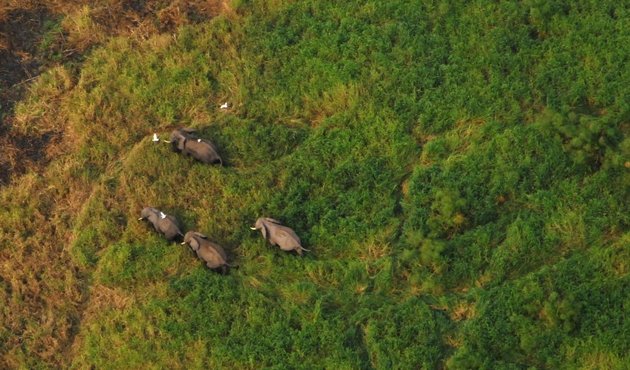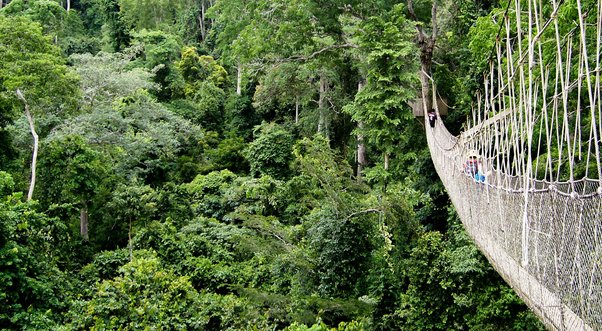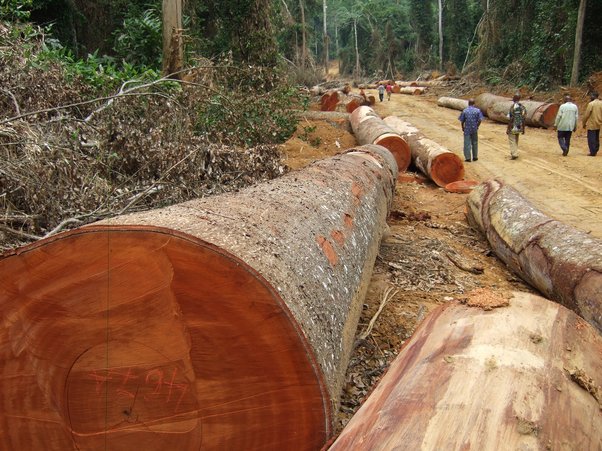Forests, biodiversity and the climate are under threat from a major hydropower project in the Democratic Republic of the Congo (DRC), which is linked to international banks and investors and opposed by local civil society activists.
Our investigation analyses leaked reports and diplomatic correspondence, and shows how the Sombwe Dam project threatens forests and rare species of animals in Upemba National Park, in order to power the region’s copper and cobalt mining belt.
Large swathes of tropical dryland forest would be flooded to create a reservoir up to one billion cubic metres in size. Not only would this project have a disastrous impact on a vital habitat by flooding part of the park, but it also appears to be in violation of Congolese conservation law.
Before the Flood: How an "illegal" dam project could destroy forests and biodiversity in one of Congo's oldest national parks
Download ResourceUpemba National Park, one of Africa’s oldest national parks, has come under severe pressure in recent years. Successive waves of poaching have left local wildlife populations “hanging by a thread”, according to conservationists. Park rangers have faced repeated and deadly attacks from local Mai-Mai militias.
The Sombwe dam project intensifies these pressures, and may pose the greatest environmental threat to the park to date.
The proposed flooding of forests may also lead to over a million tonnes of dangerous greenhouse gas emissions and lost carbon storage according to an analysis for Global Witness, and comes against the backdrop of a number of high-profile international pledges to curb deforestation.
The Sombwe dam would be a great detriment to one of the DRC’s largest protected areas and to the rare animal and plant species found there. It also risks depriving certain communities in the region, who live chiefly from fishing, of their main livelihood. The Congolese authorities should call a halt to this project
Key findings
- The 160-megawatt Sombwe Dam in the Democratic Republic of Congo could be in violation of national conservation law, as it lies within a national park.
- Upemba National Park, which is threatened by the dam, is home to many rare species including savannah elephants and DRC’s last remaining zebras.
- The initial environmental assessment for the dam was ‘seriously flawed’, according to a leaked study commissioned by the EU.
- A Congolese businessman named Eric Monga, whose company Kipay Investments controls a 49% stake in the dam venture, was previously embroiled in controversial transactions with Congo’s central bank.
- The company which will reportedly be building the dam, PowerChina, has previously received financial backing from major international banks and investors including China Construction Bank, Standard Chartered, Société Générale, BlackRock and Vanguard.
- By submerging tracts of forest, the dam could lead to emissions equivalent to 1.3 million tonnes of CO2 by the end of the century – more than the emissions created by burning 3 million barrels of oil.
The environmental risks of hydropower done wrong
The project comes against a backdrop of recent high-profile pledges on deforestation, emissions and biodiversity made at the COP26 climate summit in the UK, and the 2021 UN Biodiversity Conference in China.
While hydroelectric dams are widely seen as a ‘green’ way of generating renewable energy, they are not without their risks.
When tracts of forest are submerged in the process, this can lead to the release of large quantities of methane, a greenhouse gas 28 times more damaging than carbon dioxide.
Our investigation shows that, in order to make good on the pledges on deforestation made at COP26, financial institutions need to do proper checks on the environmental impacts of the projects they back, even if those projects are nominally "green".
Recommendations
We are calling on dam builder PowerChina, and on banks that provide it with billions of dollars in financing, to push for a review of the Sombwe project due to environmental risks. Specifically:
- PowerChina should immediately suspend any further work on the project and work with Kipay Investments to identify an alternative site that complies with DRC law and best practice environmental and social standards.
- Banks and investors with existing relationships with PowerChina – including ICBC, China Construction Bank, Standard Chartered and Blackrock – should engage with PowerChina on the concerns outlined in this report. If PowerChina chooses not to act on this information, banks should undertake their own due diligence to investigate the project – which should include meeting with civil society organisations who have concerns about the project, nearby communities, and representatives of Upemba National Park.
- Other financiers considering backing the project should not go ahead while the current site is as proposed.
- The Chinese government should consider opportunities to provide clearer guidance to the financial sector on how due diligence on environmental and social risks should be undertaken in future. This should include a revision to the Commercial Banking Regulation.
- The DRC government should explore proposed options for an alternative hydropower site – including evaluating possible environmental and social impacts of potential sites.
- The EU and other international donors should continue to raise concerns about the dam with the DRC government at the highest levels and encourage the consideration of alternative sites outside of Upemba National Park.
To deliver on their pledges to tackle deforestation, biodiversity loss and reduce emissions, governments should back rules requiring financial institutions to do proper checks on the environmental, deforestation and human rights impacts of the projects and companies they’re funding.
This would ensure that they don’t finance or facilitate projects which could have a devastating impact on the environment, biodiversity and the global climate, including dams in national parks.
Global Witness contacted all companies named in this report for comment. Read the response of Kipay Investments’ CEO. No other companies or individuals responded.
Following publication Kipay Investments issued in February 2022, read a further response to our report (French).



